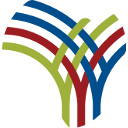Agrifood System transformation is at the heart of the new Comprehensive Africa Agriculture Development Programme (CAADP), which aims to build resilient and sustainable agrifood systems. This is because the what, when, how, and who of the decisions made about food production, processing, storage, transport, marketing, preparation and consumption drive so much that profoundly affect the human condition: food and nutrition security, decent jobs, resilience, climate mitigation and adaptation, and environmental stewardship.
The Kampala Declaration, introducing the new CAADP Strategy and Action Plan, has a strong focus on acceleration. Dr. Mayaki, the AU’s Special Envoy for Food Systems, talks about the imperative to speed up agrifood system change, because progress is too slow. The Food Systems Countdown Report, anchored by FAO, notes that globally only 20 of its 42 food system indicators are trending in the right direction and none of them fast enough to meet the SDGs.
Accelerating agrifood system transformation is not easy. Agrifood systems are intricate networks of stakeholders, policies, budgets, incentives and investments that are not necessarily self-aligning. But rather than viewing them as a single machine needing horsepower, we prefer to think of them as a vast woven fabric. Each thread – farmers, processors, traders, governments, civil society – adds strength, colour, and purpose to the whole. When threads are tangled or frayed, the fabric weakens. When they are aligned, the weave is strong, adaptable, and beautiful. Put simply, for Africa, the stakes could not be higher: so many livelihoods depend on farming, and what people eat has a direct impact on their health, wellbeing and productivity on farms, and in towns and cities.
Of course, none of these things are easy.
Our task is to help tighten and align the weave. To support this and to make it easier for decision makers to accelerate agrifood system transformation, we have presented a set of tools that have been developed in several countries, including 8 from Africa, over the past 8 years. These tools have been developed by collaborations between hundreds of experts and dozens and dozens of institutions, many from Africa. We encourage African food system leaders from all walks of life to engage with these tools: to adapt, improve, and – above all – to use them to make more strategic and catalytic decisions.
The tools include:
- Food System Dashboards that pull together food system data from multiple sources into one location to quickly describe and diagnose food system opportunities and vulnerabilities. How to target scarce resources for the best impact
- The Policy Coherence Tool shows how aligned or not policies in different sectors are behind key food system goals. Avoiding one hand not knowing what the other is doing.
- The 3FS tool, which helps to map government, DFI and ODA budgets—how well are financial resources lined up behind stated government priorities? Helping advocate for better spending
- The Diet Quality Questionnaire, a 5-minute questionnaire that allows governments and communities to quickly assess the diet quality of its people. Diet quality is a leading-edge indicator of crisis. It is affected by shocks long before hunger strikes. Real-time data, not relying on statistics from the past.
- I-CAN, the initiative on climate action and nutrition, which helps governments, businesses, and civil society to identify and seize opportunities to accelerate climate and nutrition goals at the same time. This is especially helpful for climate champions and was born at COP27. Bringing climate and food strategies together.
- The Food System Countdown Initiative, helping governments at all levels track the progress made in their food system transformation. Tracking performance and helping with accountability
Together, with our partners, we seek to rise to the acceleration challenge of Dr. Mayaki. Food system change is hard, but the opportunities are immense. These tools, if adapted, used and acted on, can help describe, diagnose, prioritise, and formulate concrete projects that are financeable, implementable and impactful. They can help us weave a fabric that is strong, resilient, and inclusive.
In these turbulent times, when trade, aid, and debt burdens are all under threat, we need to keep calm and speed up agrifood system action. UNFSS+4 is the perfect time to pick up the weaving shuttle and strengthen the tapestry of Africa’s food systems, accelerate and realise Africa’s huge potential to meet its people’s needs—for today and for future generations and for the Africa we want.
Ms. Estherine Fotabong is Director of Agriculture, Food Security & Environmental Sustainability, AUDA-NEPAD.
Dr. Lawrence Haddad is a former World Food Prize winner and currently the Executive Director of the Global Alliance for Improved Nutrition (GAIN)




